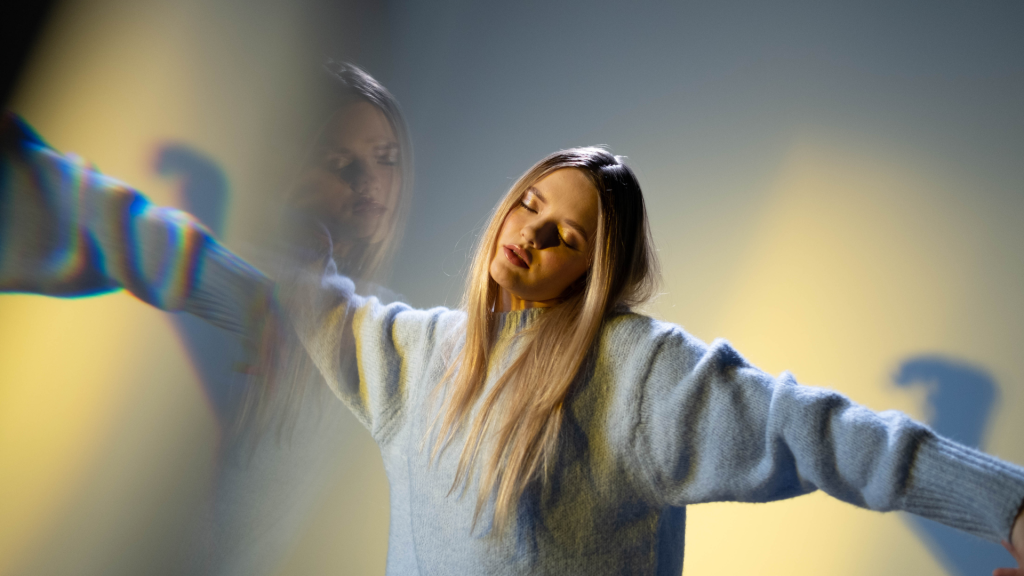If you’ve ever taken magic mushrooms, you know there’s a moment when the walls start breathing, colors shimmer, and patterns you’ve never seen before unfold right in front of your eyes. Those are visual hallucinations, one of the most fascinating parts of a psilocybin trip.
They can feel beautiful, strange, or even overwhelming, but they’re not random. There’s real neuroscience behind why the world looks that way when you’re under the influence of mushrooms.
What Counts as a Visual Hallucination?
Not every image you see on psilocybin is a full-blown hallucination. Sometimes it’s more like the world becomes enhanced, colors glow, objects ripple, light bends in impossible ways. True hallucinations happen when your brain creates something that isn’t there at all, like seeing geometric patterns on the floor or faces forming in the clouds.
In studies published in Molecular Psychiatry (2024), scientists describe these visuals as “perceptual distortions” caused by changes in how the visual cortex communicates with other brain regions. Basically, psilocybin doesn’t make you see random things, it changes how you process what’s already in front of you.
“It’s not about new images; it’s about seeing old ones differently.”
How Psilocybin Tricks Your Vision
Psilocybin converts into psilocin in your body, and psilocin interacts with serotonin receptors (mainly 5-HT2A) throughout the brain. These receptors play a key role in regulating sensory information. When they’re overstimulated, your brain’s normal filters loosen up.
The visual cortex, which sits at the back of your brain, starts firing in new patterns. Instead of passing clean, organized signals from your eyes to your conscious mind, it begins mixing signals between perception, memory, and imagination.
That’s why you might see swirling fractals, breathing textures, or pulsing lights even in a dark room.
According to a 2025 study in Molecular Brain, psilocybin actually activates the same genes in the visual cortex that light does, so your brain “lights up” even when your eyes are closed.
“It’s like your mind turns into a projector that doesn’t need a screen.”
Common Visual Effects
Everyone’s trip looks a little different, but here’s what most users (and lab studies) report:
- Color enhancement – everything seems more vivid or alive.
- Movement distortion – walls may “breathe” or flow.
- Pattern formation – geometric shapes, mandalas, or spirals appear on flat surfaces.
- Tracers – moving objects leave behind light trails.
- Synesthesia – senses blend; you might “see” sounds or “feel” colors.
- Closed-eye visuals (CEVs) – with eyes shut, you might see tunnels, landscapes, or intricate designs.
These effects tend to peak about 90 minutes into the trip and can last for several hours depending on dose and setting.
Why Everyone Sees Something Different
Your brain doesn’t hallucinate in a vacuum, it builds from memory, emotion, and expectation. That’s why one person might see cosmic geometry, while another sees faces or animals.
Research from Schizophrenia Bulletin (2025) shows that visual hallucinations under psilocybin involve the same brain areas as dream imagery and imagination. Essentially, psilocybin temporarily merges waking perception with dream-like creativity.
Set and setting matter here too. If you’re in nature, your visuals might reflect natural patterns, trees flowing, stars forming shapes. Indoors, light, color, and texture play a bigger role.
“The trip paints with whatever canvas you give it.”
What’s Going On in the Brain
Neuroimaging studies show that during psilocybin trips, the visual cortex becomes hyper-connected. Instead of staying isolated, it starts talking to regions involved in emotion (amygdala), memory (hippocampus), and self-awareness (default mode network).
This cross-talk explains why visuals feel emotionally loaded, seeing a color shift might move you to tears, or a pattern might feel deeply meaningful.
The Molecular Psychiatry (2024) review suggests that this brain-wide communication spike may be key to psilocybin’s therapeutic potential. When your brain temporarily “rewires,” it breaks rigid patterns, whether in thought or in vision.
When Visuals Become Too Intense
Most visuals are harmless and even joyful. But high doses or stressful environments can make them overwhelming. Some people report seeing frightening imagery or distorted faces during anxiety spikes.
If that happens, grounding helps: turn on softer lighting, breathe, close your eyes, and remind yourself it’s temporary. The intensity will pass within minutes.
Remember, your brain is just showing you its inner screensaver, it’s not permanent or dangerous.
What Happens After the Trip
Once psilocybin wears off, your perception returns to normal. Some people report an “afterglow” where colors and details seem richer for a few days. In rare cases, visual snow or lingering distortions can occur (a condition known as HPPD), though it’s uncommon and usually mild.
If anything feels persistent or distressing, taking a break from psychedelics and resting your eyes and mind usually helps.
Seeing the World Differently
Visual hallucinations aren’t just eye candy, they’re a window into how the brain creates reality. Psilocybin doesn’t invent a new world; it reveals how flexible perception already is.
Once you’ve seen the world breathe, it’s hard not to look at it differently afterward. And maybe that’s part of the point.
“The visuals fade, but the wonder stays.”
Summary
Psilocybin visual hallucinations come from heightened activity in the brain’s visual cortex and altered serotonin signaling. They range from enhanced colors to intricate patterns and occur because the brain’s sensory filters relax, allowing imagination and perception to blend. Most are harmless and fade as psilocybin leaves the system.
Sources
Stoliker, D. et al. – 2024 – Neural Mechanisms of Psychedelic Visual Imagery
Heller, N.H. et al. – 2025 – Visual Hallucinations in Serotonergic Psychedelics and Lewy Body Diseases

